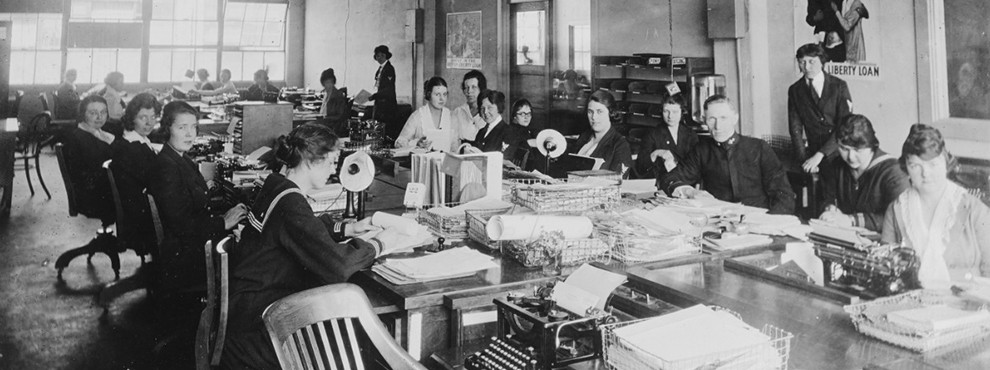
Yeoman (F)
World War I was the first war where women could formally serve in the U.S. Armed Forces as part of the reserve force. Desiring to serve their country, nearly six-hundred Yeoman (F), or "Yeomanettes" were on duty by the end of April 2, a number that had grown to 11,275 in December 1918. The first woman Navy petty officer was Loretta P. Walsh. She was sworn in as a Chief Yeoman in March 1917 and served at the Philadelphia Navy Yard, Philadelphia, Pennsylvania. Yeoman (F) primarily served in secretarial and clerical positions, though some were translators, draftsmen, fingerprint experts, ship camoflauge designers and recruiting agents. Besides serving in the United States, Yeoman (F) were ordered abroad to Guam, Panama Canal, Hawaii, France, and even on served with the Office of Naval Intelligence in Puerto Rico. Women also were inspired to serve in the U.S. Marine Corps during the war. On August 12, 1918, Secretary of the Navy Josephus Daniels approved the acceptance of women in the Marine Corps due to the high demands of work that came with going to war. The following day, Opha May Johnson became the first woman Marine and served in the office of the Quarter Master General at Headquarters Marine Corps, Washington, D.C. The official name of the women who served were Marine Reservists (F). They are also known as "Marinettes". 305 female Marines served during the war, with some even attaining the rank of Sergeant, only within the span of three months.
Other Resources:
NMUSN Women in the Navy Pamphlet
Image: NH 52943: Navy Department, Washington, D.C., 1919. Note the Yeoman (F). U.S. Naval History and Heritage Command Photograph.



